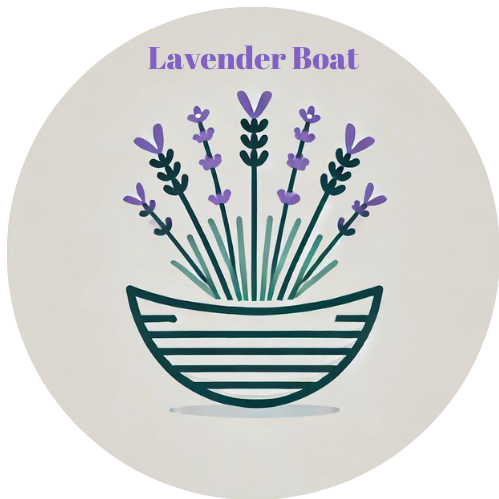Here we will explore when and how inhaling lavender is safe. Lavender is very safe in normal amounts, but potential side effects exist from ingesting too much. People with estrogen sensitivity or on sedatives should use lavender cautiously under medical guidance.
Listen to this guide
or read on …
Understanding Key Precautions when Inhaling Lavender
With its overall gentle nature and calming aroma, lavender enjoys a reputation as an incredibly safe, risk-free botanical. But while minor in most healthy adults, potential side effects do exist even with natural lavender. Like any biologically active substance, appropriate precautions enable safely harnessing lavender’s therapeutic potential.
Follow along as we detail sensible safety guidelines for both ingesting and inhaling lavender. You’ll gain insight into dosage levels, populations that require extra caution, signs of sensitivity, what to do in case of reactions, and sourcing considerations. Our goal is not to deter lavender use but to empower your ability to incorporate it into your wellness routines with sound knowledge. Soon you’ll enjoy lavender’s benefits with added peace of mind.
Potential Side Effects of Inhaling Lavender
While rare in doses used for cooking or tea, oral ingestion carries more risks than topical use or aromatherapy:
- Nausea, vomiting, indigestion from ingesting doses > 0.5 ml.
- Dizziness, and headache in susceptible individuals from too much oral intake
- Potential hormonal effects due to the phytoestrogen content in lavender
- Increased drowsiness when combined with sedative medications or alcohol.
- Irritation or skin reactions in those allergic
- Choking hazard from swallowing pure undiluted oil in children
Using culinary lavender sparingly and pure essential oils properly reduces risks.
Risks Associated with Inhaling Lavender
Potential adverse effects from inhaling lavender include:
- Headache, drowsiness from continuous overexposure to the scent
- Increased appetite and slightly raised heart rate in certain individuals
- Upper respiratory irritation or asthma exacerbation in those prone to sensitivity
- Possible endocrine disruption at very high concentrations from occupational overexposure
- Escalation of prepubertal gynecomastia in young boys after topical applications
- Safety is unknown in pregnant women so exercise caution
With judicious intermittent use, most tolerate and benefit from lavender inhalation without issues.
Who Should Exercise Caution when Inhaling Lavender
Those who require extra care or medical guidance with lavender include:
- Pregnant women and breastfeeding mothers
- Young children under age 6
- People with estrogenic dependent conditions like cancers or endometriosis
- Individuals taking sedative medications that lavender may enhance.
- People with allergies or asthma prone to sensitivity
- Those with taken with lavender or botanical supplements before
- Boys not yet reached puberty due to gynecomastia risk.
- Anyone with adverse reactions or side effects from past lavender use
While minimal, heightened risks in certain groups warrant using lavender cautiously under medical guidance.
Safe Dosages for Inhaling Lavender
Authorities suggest safe oral dosages at no more than:
- 1.5g dried lavender buds per day in divided doses
- 2 ml of pure lavender oil a day for adults only
- 2-3 cups lavender tea daily, using 1-2 teaspoons per cup.
- 6 drops lavender oil a day for children 6-23 months old.
- 12 drops lavender oil a day for children 2-6 years old
- Lavender is not considered safe for children under 2 years old.
- Up to 2-4 drops pure essential oil for adults diluted in liquid
Staying within recommended culinary doses minimizes risks when ingesting lavender.
Topical Lavender Safety Tips
To use lavender oil on skin safely:
- Dilute with a carrier oil before applying pure essential oil.
- Perform patch tests to check for allergic reactions first.
- Use lowest effective concentration – usually 1-2% maximum.
- Take extra care around sensitive regions like eyes and mucous membranes
- Avoid direct sun exposure after use due to photosensitivity reactions.
- Discontinue use if irritation, rash, or redness develop.
- Keep out of reach of children to prevent accidental ingestion.
- Never apply undiluted essential oils directly to skin or ingest them.
With proper dilution, skin testing, and dosing, topical lavender use is well tolerated.
Signs of a Lavender Allergy or Reaction
Seek medical help if you experience:
- Hives, raised itchy rash, or skin flushing after using lavender.
- Swelling of lips, face, tongue, or throat making it difficult to breathe
- Runny nose, congestion, or sneezing when inhaling lavender.
- Red, watery eyes if lavender gets near eyes.
- Coughing, chest tightness, difficulty catching your breath.
- Nausea, vomiting, diarrhea after ingesting lavender.
- Dizziness, headache, confusion after using lavender.
- Increased heart rate, low blood pressure
Discontinue lavender and consult an allergist if any hypersensitivity reaction develops.
What to Do if a Reaction Occurs
If a lavender reaction happens:
- Discontinue lavender use immediately.
- Wash skin with soap and water to remove lingering oil.
- For skin rashes, apply cold compresses and take an oral antihistamine.
- If inhaled, breathe fresh air and use an inhaler if asthma related.
- For vomiting or diarrhoea, drink fluids and rinse mouth
- Monitor symptoms – seek medical attention if they progress or don’t improve.
- Note the type of lavender and delivery method that caused the reaction!
- Permanently avoid the lavender variety and form that prompted the reaction.
- Try alternate relaxation oils like chamomile, sandalwood, or ylang-ylang.
With proper aftercare, most mild lavender reactions resolve on their own.
Sourcing High Quality, Pure Lavender
To minimize reactions, choose 100% pure therapeutic-grade lavender from reputable brands:
- Lavender should only contain the oil compounds linalool and linalyl acetate
- Avoid cheaper “fragrance” grade oils which often have synthetics
- Ensure proper Latin species name is on the label like Lavandula angustifolia
- Look for organic, pesticide-residue free oils whenever possible
- Only use food-grade oils if ingesting
- Check company distillation and testing standards.
- Store in dark glass bottles away from heat and light
- Avoid old or perished oils by heeding expiration dates.
Ensure safety and purity by carefully scrutinizing lavender oil sources.
Final Thoughts on Inhaling Lavender
Like even benign substances, the maxim “the dose makes the poison” holds true for lavender – consumed judiciously, it brings profound plant wisdom into your life. But used recklessly, harm outweighs benefit. Walk the middle path by adopting suitable precautions. Find the optimal minimal dose providing desired effects without crossing into excess. Listen to your body’s innate feedback to signal when less is more. Integrate lavender as part of holistic wellness, not relying solely on it for serious conditions best addressed through comprehensive medical care.
Yet take care not to overcorrect into total avoidance due to heightened anxiety about safety. With knowledge, appropriate confidence in using lavender can be restored over time, along with the tranquillity it brings. Avoiding toxins is wise, but preventing yourself from receiving lavender’s gifts out of disproportionate fear robs you of nature’s support. The key is thoughtful moderation and finding your unique therapeutic window – not fearmongering propaganda or casual overindulgence. Like so many things, judicious, responsible use and a little common sense will allow lavender’s magic to blossom fully.






